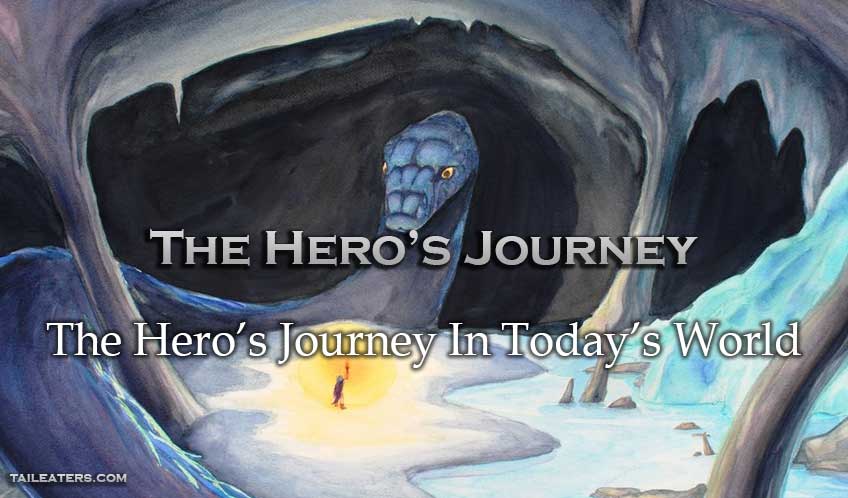
Earth is Hiring: Heroes Needed
Imagine there are two distinct ways of viewing the world. The first view, the waking world we spend most conscious time in is the material world, the only world that seemingly exists for many. This view is called materialism, monism, and for whatever reason, be it a fluke of history, science adopted and continues to hold fast to this ideology and philosophical worldview as the dominant paradigm. A materialist viewpoint is largely equivalent to an atheist viewpoint; it implies a certainty that this material reality is the only living consciousness we can or ever will experience; that when we pass on, we will not remain conscious throughout and beyond that process. Materialism seems natural to identify within modernity: what else could there be except that to which I open my eyes and see every waking moment?
Although a relatively small number of people in the world are pure materialists, we all are to varying extents given our parasitic relationship with it, utilizing it. In the sense of our alteration of Earth, materialists, the New World Order or Illuminati or the wealthy few who pull humanity’s strings through resource control, seem to be very interested in promoting materialism. The West, as a whole, has been on a steaming charge towards materialism in the past 200 or so years since the industrial revolution accelerated.
In contrast to materialism is the idea of the spiritual world, idealism, roughly consonant, symbolically at least, to dream worlds, the non-ordinary reality, shamanic spirit realms, and perhaps even the quantum reality, a concept with which science still struggles to reconcile. Some New Age writers, even Alan Watts, suggest the quantum has important implications for how to live, though exactly how nobody yet can fully understand: perhaps, whatever we manifest in the mind, be that fear, or happiness, anger, sadness, anything, is reflected back to us by the world we see; our brain projecting a hallucination of this world; the hallucination depends on one’s state of mind, and so if one’s state of mind is anxiety and fear, then whatever we think will occur will actually occur: a kind of self-fulfilling prophecy. Perhaps the universe, when we lay down our obsessions and controlling natures might give us exactly what we need. Paulo Coelho has sold millions of books based on this simple idea of listening to and trusting the heart.
If one’s mind is a state of bliss, then we radiate bliss and manifest that bliss into our lives and others’ lives. Or another possible outcome of the quantum and hallucinatory brain is that perhaps we are all individuals living in self-contained universes of one, such that only each of us are real in our own universe, and all else is a projection of the brain. Whatever the truth, this other realm complicates materialism.
A third view is dualism, integrating both; while the material world exists, there is an aspect of being human, within the mind or body, a spirit or consciousness, that does not have a material form. This is by far the most common view among humanity; that is, not many hold firm to the idea that our world is entirely spiritual, and more dualists exist than materialists.
The Hero’s Journey as Path
The Hero’s Journey is fundamentally about death and rebirth of the imagined person we tell ourselves we are in the mirror. At times this imagined self functions seemingly well and our lives are pleasant. Perhaps that is the case. But at other times this self-image holds us back and is no longer useful. This is grasping onto the past and prevents us from ultimately moving forward. Similarly, we can grasp too far into the future, although I would argue that this is generally less destructive than past, of some person we tell ourselves we are supposed to be. Clinging to anything, be that the past or future, creates anxiety, and anxiety is self-created.
Instead, the Hero’s Journey teaches us through myths and stories the Middle Way. This idea, living in the present, sounds nice but is harder to actualize, but there is a process for undertaking it. As we undertake it, we face our inner demons, Shadows, and overcome the various pains and traumas of childhood by seeing that all Westerners are, in some basic sense, beholden to the same destructive powers which separate us from others and nature, the same childish notions of good and evil.
The Hero’s Journey, taken to completion, results in the freedom to live. This means being free from anxiety, no longer beholden to a fear of death or in seeing false divisions everywhere. Taking the Hero’s Journey is a way for people to begin building the trust to “let go” and in so doing we allow events unfold, as fate and destiny. It is also an integration of Spirit and Matter, something actually occurring within the brain as we undertake the quest of self-improvement. This is finding our soul. Science, and materialism, for all the seeming comforts brought, has probed but remains far from finding the soul, the source of creative energy, our Free Will; the choice to manifest love–say, kindness, eye contact, virtue–or hate–anxiety, fear, anger, vice.
Another important analogy of the Hero’s Journey is the gradual disintegration of egocentrism. At the opposite end of the ego-self is the other Self, which also means God or unity of our brain hemispheres. The ego is and always has been an illusion, the narrator shown to the outside, the Grand Wizard of Oz, a tyrant inside our mind seeming to utterly dictate the show. In the Bible, the Ego is referred to as “the evil one.”
“And do not lead us into temptation, but deliver us from the evil one. For Yours is the kingdom and the power and the glory forever. Amen” – Matthew 6:13
Given the masks we all tend to wear and build upon over the course of our lives, this Self may in fact appear very much as a scrawny man behind the curtain, filled with humility.
Compare these two representations of the Self/Ego-paradigm below. One comes from a materialist perspective—Sam Harris, in this case—while another might come from a more spiritual perspective. What differences do you notice between these two views of the Self?
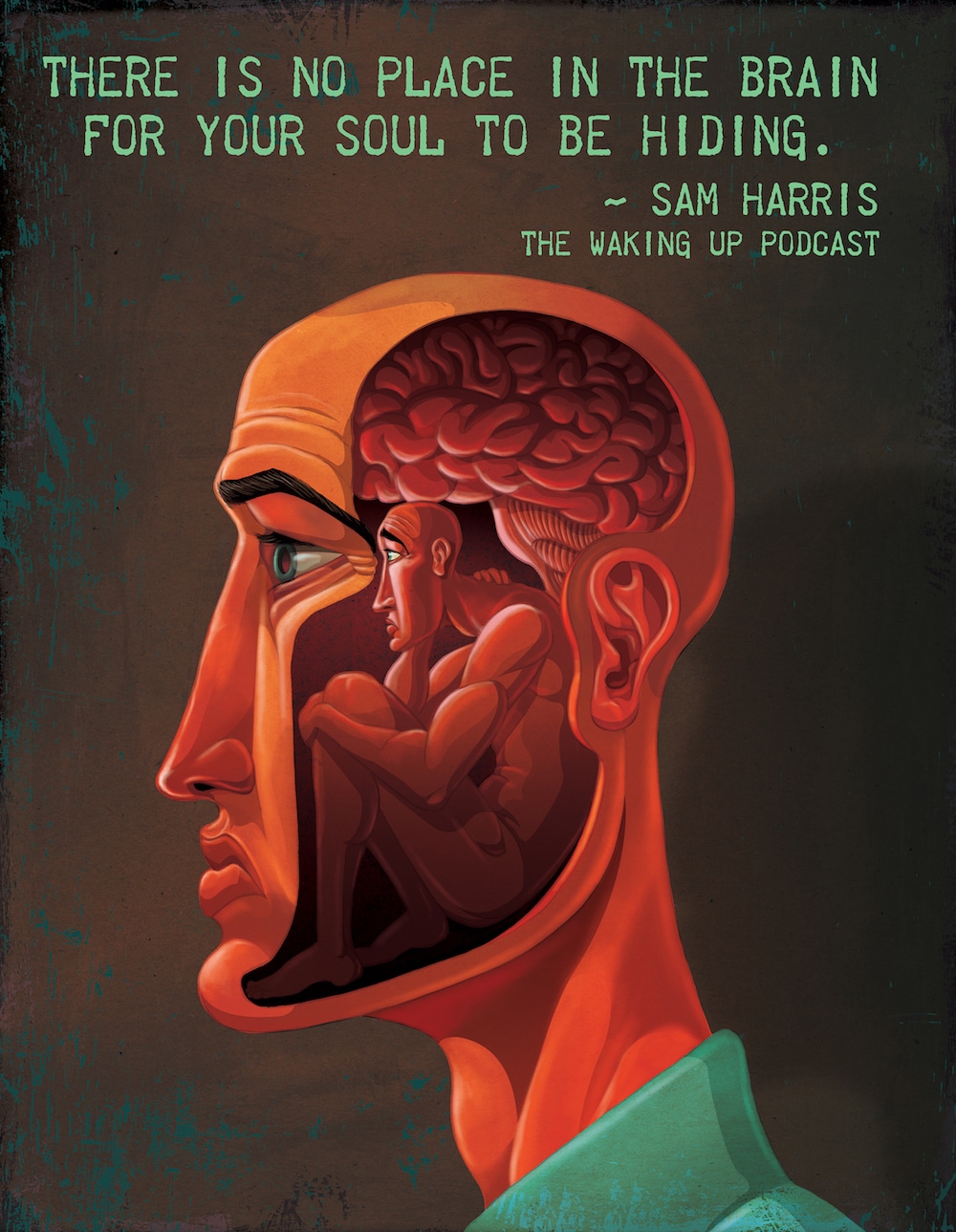
Where is Humanity Heading?
Friedrich Nietzsche famously proclaimed “God is dead” (1882). He was in some sense speaking of the fire or spirit of God, burning since the beginnings of human existence, the bubble of belief that a higher place exists poked by Darwin’s seemingly pointy spear. It was a nihilistic sentiment about the future reflective of his cultural times, that meaning and purpose, which can only come from within, be that God or another kind of truth, was beginning its slow decay to an eventual death. Nietzsche, as a visionary, saw the consequences of this written in the future, knowing that many humans, in their boredom and chaos without spiritual structure, would cause great harm as a result. Evolution seemingly destroyed God and created nihilism–the belief that nothing matter. Thus there is no fear of reprisal, repercussions to be had in the next life for improper actions in this life. Perhaps he knew a deeper pattern of man’s eventual submission to the warring angels of his nature, and our modern world can be seen as the result of Nietzsche’s prophecy, where our steel churches of another kind grow ever larger and stronger but our inner lives fracture and fissure ever deeper.
Or perhaps Nietzsche was wrong, and scientists like Steven Pinker (2018) are correct; pointing to raw numbers showing a betterment of morality through less violence; statistics that seemingly can’t lie or hide anything, to show by many metrics, his view that our world is becoming a better place. Pinker’s metrics, however, cannot measure the Soul, the forked path within us all leading to more lead or transformed into gold. They also give no weight to the larger manifestations of harm that hang over our whole world, or the many transformed ways of hate which now spread digitally rather than physically. Furthermore, repetitions of history lead to the conclusion that man’s ethics, angels, can be swayed easily and swiftly, in the right circumstances. Or perhaps another view as that we are not becoming better, but rather our society is turning into another form of slave system, with humans increasingly entrapped by worlds of consumerism, addictions, and mind-controlling technology.
With the tone of his books, Joseph Campbell would appear to have believed that the Hero’s Journey was of life and death significance, of world-in-the-balance importance. The full implications of the Journey’s successful—or, in contrast, it’s unsuccessful—conclusion can be understood by looking at a favorite myth or story to see what happens at the end. The Hero, having gone through trials and tribulations and, ultimately, having found their inner truth, becomes equipped with the knowledge to transform themselves and others and, ultimately, the entire world. The Hero lays down their ego and flesh for all, helping not for a new form of self-aggrandizement but because that is all there is to be done.
In contrast, the anti-hero embraces the darkness and manifests that darkness for harmful ends, to their life or others—to destroy the world. At some step in their life, this person, which can be any of us, has at some step refused the current call to adventure or remains lost from the path as they refuse to fight inner or outer demons. In its common forms, this is being overcome by the ego—emotions allowed to rampage in the form of destructive thoughts sent internally or externally; this is the person who drowns in drugs and alcohol, loses themselves permanently in the digital, or manifests harm to themselves through depression or mental illness or as abusive behavior towards others. And even if harm is entirely self-directed, we are still denying a greater human potential to do something with this life.
Being lost in the many euphoric escapes we’ve created in our modern world, is as Pleasure Island in Pinocchio. What does this clip mean to you, in terms of seeking or not seeking meaning through our Hero’s Journey? For you personally, and for society?
Taken to the extreme this smothering of the internal voice, ignoring the psyche’s shadow and projecting a hate we can’t even see, can be manifested for great destruction upon our own bodies warped by drugs and alcohol or being too sedentary. Whereas we cannot know the true bounds of the positive transforming potential of the Hero towards both themselves and the world at large, we similarly cannot know the bounds of destructive, negative potential for the Hero who refuses the call, towards both themselves and the world, although we can get a sense, for both.
Transformations of the Hero/Antihero
Seen in real life examples, Socrates, Hildegard von Bingen, Gandhi, Mother Theresa, Nelson Mandela, Joan D’Arc, and the Buddha represent paragons of what the Hero can manifest for good by taking their Hero’s Journey.
In contrast, the obvious examples of Hitler or Stalin or the next young man become a school shooter and numerous others all display the suffering the Hero’s Journey refusal can inflict.
From a world-changing Hero to the more common Hero forms, the Hero may be the mother or father who is the Wise King or Queen of their small kingdom, their family; by raising their children wisely and ethically, the children manifest Love into the universe and give back energy through virtue, rather than take away through vice. In contrast is the person of violence or emotional abuse, the Devouring Father or Mother who consumes the head/mind/identity of their child; preventing the child from becoming an individual, instead staying a puppet to the parent’s whims; just as Pinocchio until he saves his father from the Whale, or Luke until he faces his Father in the cave. We must travel to the deepest depths to find the lost parent.
The consequences are very real. The Hero’s Journey and lessons of myths are anything but mere bedtime stories.
What Does it Mean to be Human?
Known by many other names, the Hero’s Journey is the alchemist’s purification of the soul, the transmutation of personal lead into gold; it is Jung’s circumambulatory individuation process, the Shaman who retrieves the soul/Father from the Belly of the Whale, it is the revelation that we are all each other’s healers by healing ourselves.
But how many of us need healing?
The Hero’s Journey is also a process of death and rebirth of one’s identity, the false image we project into the world. It is an acceptance that change is a necessary part of life, that we must–if we are to be healthy psychologically–set down the past parts of ourselves or the things we foolishly cling onto in order to alleviate our suffering and grow. It is no longer being completely beholden to addiction, for which we often replace one form with another.
“Not all who wander are lost.” – JRR Tolkien
“It is only those who know neither an inner call nor an outer doctrine whose plight truly is desperate; that is to say, most of us today, in this labyrinth without and within the heart.” – Joseph Campbell, The Hero with a Thousand Faces
“All happy families are alike; each unhappy family is unhappy in its own way.” – Leo Tolstoy, Anna Karenina
“Where the returning Veteran rejects both military culture as well as American culture—these are the truly lost souls” – David Kopacz, The Hero’s Journey
Although we can’t know for certain the mental state of others around, my sense is that a great many people–men most of all–live fractured, dissociated lives, their true purpose yearning to be expressed, their full potential to be achieved. No matter which direction I look, the inevitable feeling is that suffering is widespread beyond reckoning in our country, a mental disease worse than any plague ever known, which is why our divisions are so great. To be born into this material, culture-focused world, as children, is traumatic, and thus we are acculturated by screaming and crying ourselves to sleep at night in our cribs, with only Joseph Campbell’s Guardians of the Nursery to provide comfort.
To suffer requires one to be living most of the time in the mind and enthralled by the immediate reaction of emotional triggers and anxiety. In this we remain susceptible to the mode of being we’ve clung tightly to, as the brain takes easiest neural path in response to some event we experience. These show up as fear of the past and future and which show up as destructive thoughts projected outwards onto others, blaming others as the ego builds an impenetrable shield around the psyche; keeping us beholden to the endless cycle of anger, sadness, fear, towards others and ourselves, the act of thinking and being occupied by our thoughts we naturally wish to suppress through distractions in technology or drugs and alcohol. For others, actual violence is manifested outwards as they believe the story inside.
A World Filled With Distraction
The material world, with all its distractions, has only locked us deeper and deeper within the mind, and as we become more trapped, the disconnection from the body grows more stark, creating an effect as though we have great ideas in our head but for some strange reason can’t turn them into anything real.
The dark side of technology, when not utilized as a tool but instead imprisons us, consumes all spare moments of time engaged in wasteful memes and watching the world go by. This time could instead be spent on passions or hobbies or creative pursuits, but instead it can often puts us further into this part of the brain. As children are increasingly raised by machines, they become disconnected from this fundamental part of being human. Yet technology can be used constructively, engaging in self-improvement or writing or graphic art, but the need to distract from something within often leads to living through lives of others online.
There is a sentiment that meaning, purpose, a reason for our existing is, purportedly, non-existent. Those who hold tightly to personal meaning but can’t actualize that, in contrast, tend to show up in society as aberrant; homeless wanderers, persons oft deemed mentally ill, broken, unwell, and the common course of action is to massively medicate these individuals, as is seen with the expansion of the pharmaceutical mental health wheel. The crazy person is someone that has held onto their meaning but can’t actualize it. Taking the Hero’s Journey means transforming what appears as a mental health problem into healing energy towards oneself, others, and the world.
Regardless of society as a whole, I can testify in heartfelt earnest that a great number of men in the United States suffer, as they tell that to each other and to me, and anyone who says differently in the public realm is often laughed into oblivion to suggest this. But why else would men rape, murder, and be the seeming cause–or be certainly blamed as such–for most pain and suffering in the world, if they themselves are not damaged and suffering? This truth is indisputable for me, but there is a path forward: transforming the Soul through the Hero’s Journey using the many natural tools available. The Hero’s Journey is a process for men to transform and find spiritual internal meaning, discover a personal relationship with God, through their unified Consciousness.
Addiction in the Hero’s Journey
Much of living in our modern world means making sacrifices, and for however many of us who do suffer pointlessly, this comes in the form of a vocation or path that is not value-based or meaningful, but pays the bills. And to sacrifice our truth for whatever purpose, be it an unsatisfying career, having children that one half of a partnership doesn’t truly want, going to a church someone doesn’t believe in, staying in a marriage or relationship or friendship filled with anger and resentment causes inward and outwardly projected suffering we cannot see. Thus, we create a monster, a demon born out of whatever addiction it is within resultant from repeatedly lived unhappiness and meaningless suffering.
Addiction is as the game Whack-a-mole, where one mole is whacked down, more forever keep popping up. Modern humans seek to plug the holes to keep the moles, monsters within from popping up all over our life, leading us on a seemingly endless cycle of looking for happiness in all the wrong places. The Whack-a-mole analogy is symbolically equivalent to the Hydra, with many heads, forms of the same Ego monster. Once a head is cut off, another grows, another inner torment of the human psyche. Taking the Hero’s Journey, the Hydra is at first a frightening monster, just as letting go of an addiction, a coping mechanism, is frightening.
In facing the Hydra, we find it isn’t that scary after all.
And can then learn to defeat it, not by aimlessly cutting off heads that regrow, but through creativity like Hercules or integration. As we integrate it into ourselves, we are transforming any monster/shadow’s energy into Love and kindness towards others. This step of the Hero’s Journey is absolutely essential, and the energy of darkness transformed is how the Hero manifests greatness into the world.
Meaning from the Hero’s Journey
The Hero’s Journey and almost every myth involve the individual traveling through some quest or adventure. It is a Journey that begins with learning to feel all inner parts of ourselves, primarily the dark, staring intently at our inner thoughts. That darkness, integrated, allows us to redirect full energy towards being present for others, personal projects of passion, living our truth. The knowledge, the ability, is to live between the two worlds of our normal thinking analytical mind and the spiritual mind, the left and right brain hemispheres, respectively. In so doing we actualize our life through the Wise Mind, located somewhere around the stomach. Diet, then, at least for finding meaning, is essential for the Hero who is off the Path.
The Hero’s Journey is one clear rebuttal to the question of whether life has any purpose at all, and is a teachable guide to find that true purpose, encoded in countless tales and symbols whose meaning and magic power of transformation has seemingly disappeared through the sands and winds. If only we could decode the Riddle of the Sphinx, of life, we could channel its boons within ourselves.
With our world fractured, divided, where one filled with Hate can affect the lives of many, even the fate of the world, Campbell wasn’t exaggerating when he asserted that the fate of the universe hangs in the balance, the fate of humanity upon the Hero’s shoulders.
Exercises:
Here is a selection of possible exercises to practice as part of the Hero’s Journey. It will be helpful to buy a cheap notebook, a Hero’s Journal, to document and make more real your work in this training. Writing in a book makes a tangible difference in thought articulation, but a digital document would work as an alternative. As well, make a Hero’s Folder on your computer if you use that, for any electronic notes and for collecting art and images important, symbolic to your life.
Exercise 1: The Hero’s Circle
Imagine yourself as a series of 7 concentric circles. Moving out from the single dot the core representing a singularity, the circles grow larger, perhaps finite or infinite. As you move in, they become smaller. Visualize an onion as the same, with layers. The outer layers on the onion are larger, more visible, while the inner layers become infinitely small. Now symbolize a version of the hero at the center of the concentric circles, the onion. What would that Hero be called, if you gave it a name or many names? Moving outwards, what might be the worst version of you, the villain, look like, what kind of monster? What names, a name you’ve heard before or made, might that monster have?
Exercise 2: The Hero’s Inventory
Taking the Hero’s Journey, relieving suffering through facing our shadows, fears, requires an honest assessment of ourselves, of where we are not living according to our values. Taking an inventory is another way of talking about doing inner work, which is part of the entire Hero’s Journey from beginning to end. When talking about values, it’s hard to know where to begin. So, consider this list of values, the description of each, and then identify 7 values that speak most to you personally. Less is better than more, as the goal is to help you focus on what is important. If there is a specific value not listed, put your value instead. After selecting your values, write down what each value means to you in your life: what does it mean in your day to day lifestyle?; why is the value important, are there memories tied to that value?; how do you manifest it in your current life?; how could you manifest it in ways you are not currently doing? These questions require honest reflection, and a journal nobody will ever see is a great way to develop this open honest reflection if it isn’t something you are used to.
Exercise 3: The Hero’s Circle in four parts
Now re-examine the Hero’s Circle in the context of your personal life, in the four main domains that also share a commonality with the Native American medicine wheel. Where are you in each domain, in terms of where you are now and where you want to be?
Like in the first Hero’s Circle, what does being at the outside or inside within each of the four domains look like for you, personally? What does your worst self look in terms of work or family or friends or health; what does your best Self look like? What would your life look like, in each worst/best scenario?
Exercise 4: Domain-Value Matrix
Next, consider how each value you chose can be used to further your Journey in each domain of wellness? Use this spreadsheet to help visualize this in a value-domain Matrix, a kind of combination of exercises 2 and 3. Do the ways values manifest in each domain overlap; does working on honesty/authenticity/trust/loyalty/etc. in relationships synergize to improve your work or leisure life, or does not manifesting one value at work then spill over into leisure and health? How are you currently living your values in each domain, and how can you improve, in an honest assessment?
The Hero’s Journey Domain-Value Matrix
References:
Campbell, J. (2008). The hero with a thousand faces. Novato, CA: New World Publications.
Castaneda, C. (1970). The fire from within. Washington Square Press.
Harris, R. (2008). The happiness trap: How to stop struggling and start living: A guide to ACT. Trumpeter.
Kalsched, D. (2013). Trauma and the soul: A psychospiritual approach to human development and its interruption. New York: Routledge.
Kopacz, D. (2015). The hero’s journey. Self-published.
Pinker, S. (2018). Enlightenment now: The case for reason, science, humanism, and progress. New York: Viking Press.
The Holy Bible: New King James version. (1982). The Gideons International
Learn more about The Hero's Journey by reading our full guide
Andrew Haacke is a lifelong spiritual seeker who researches and writes about the Hero's Journey, symbolism, mythology, and psychedelics. He studied anthropology at the University of Utah and social work and public administration at the University of Southern California.
Join the Discussion
Want to discuss more about this topic and much more? Join our discussion group online and start exploring your consciousness with others like yourself

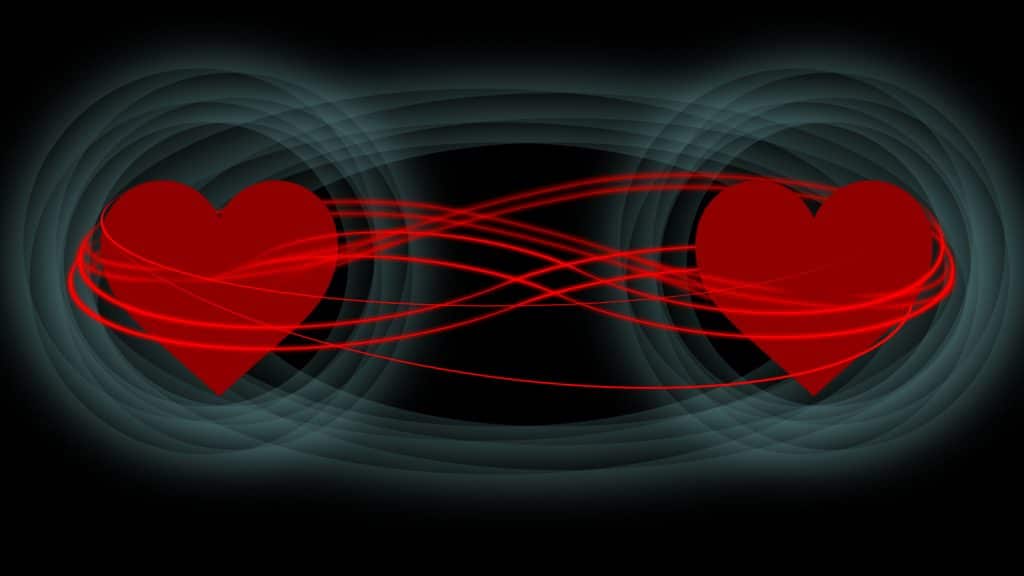
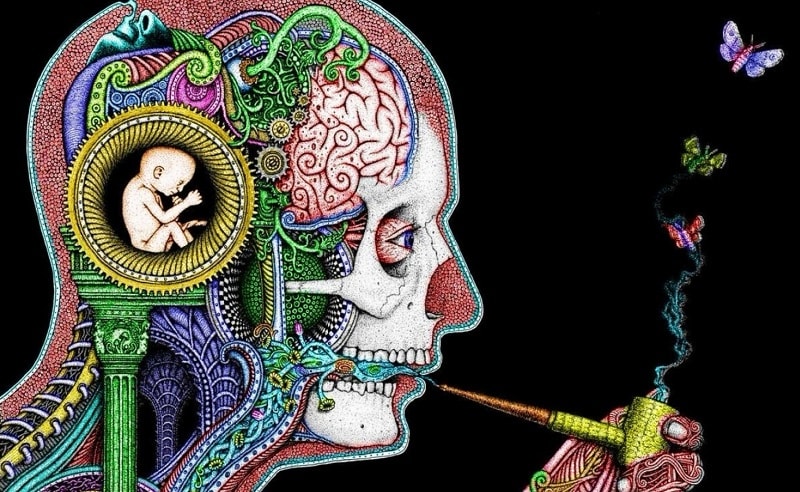
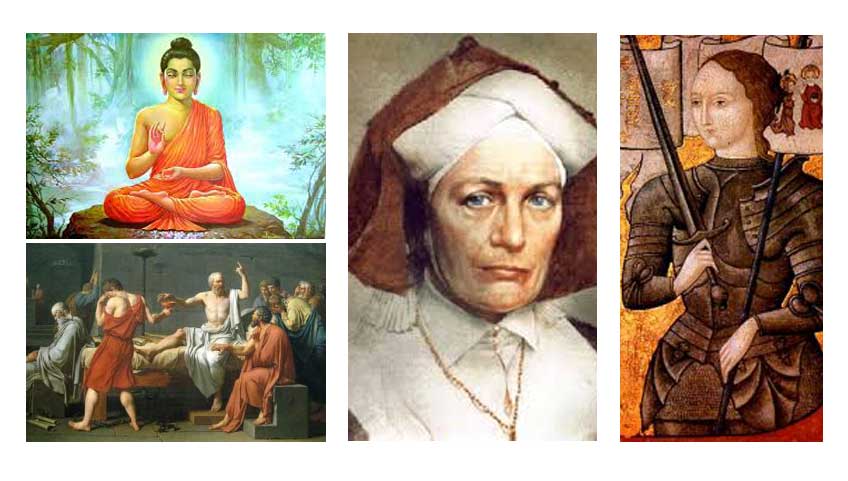
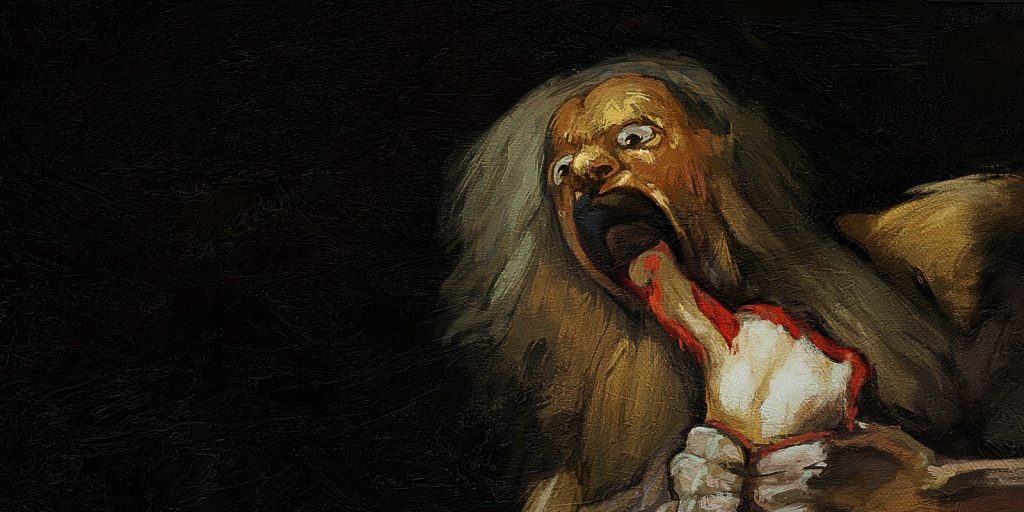
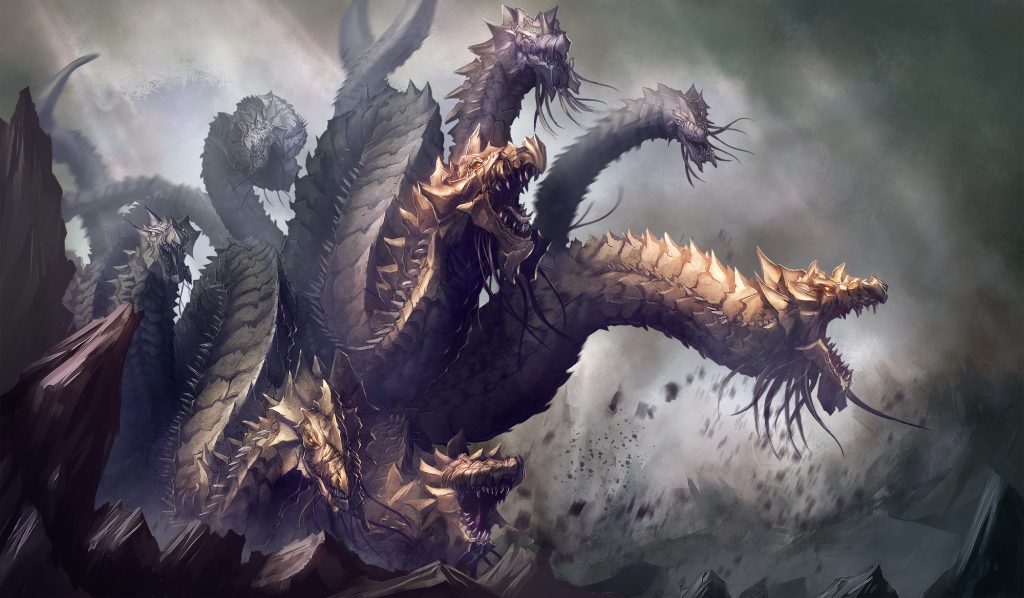
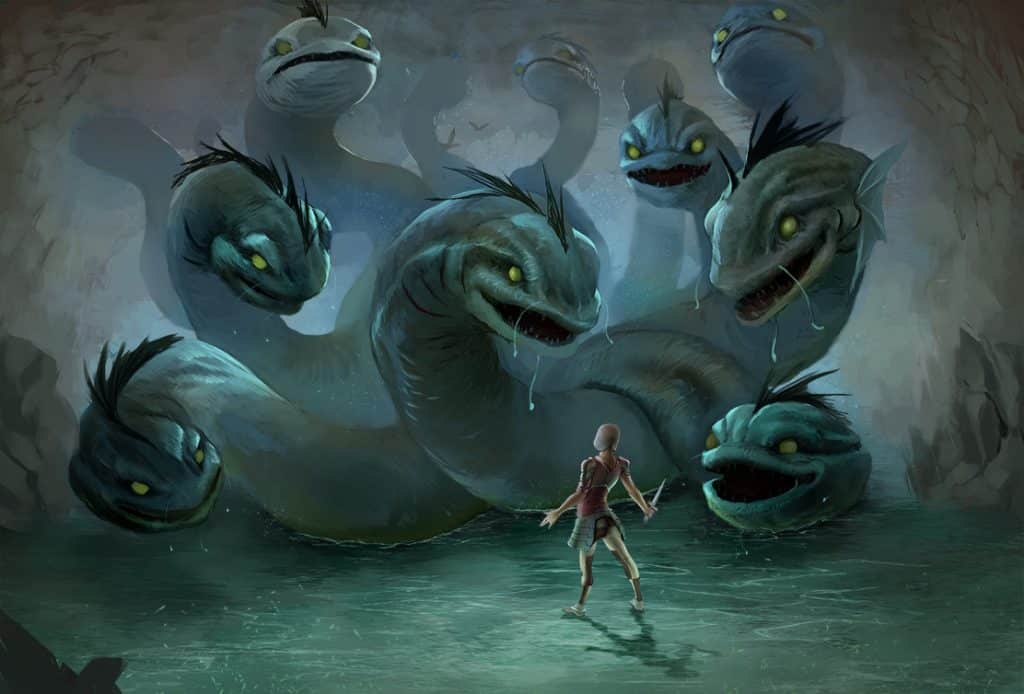
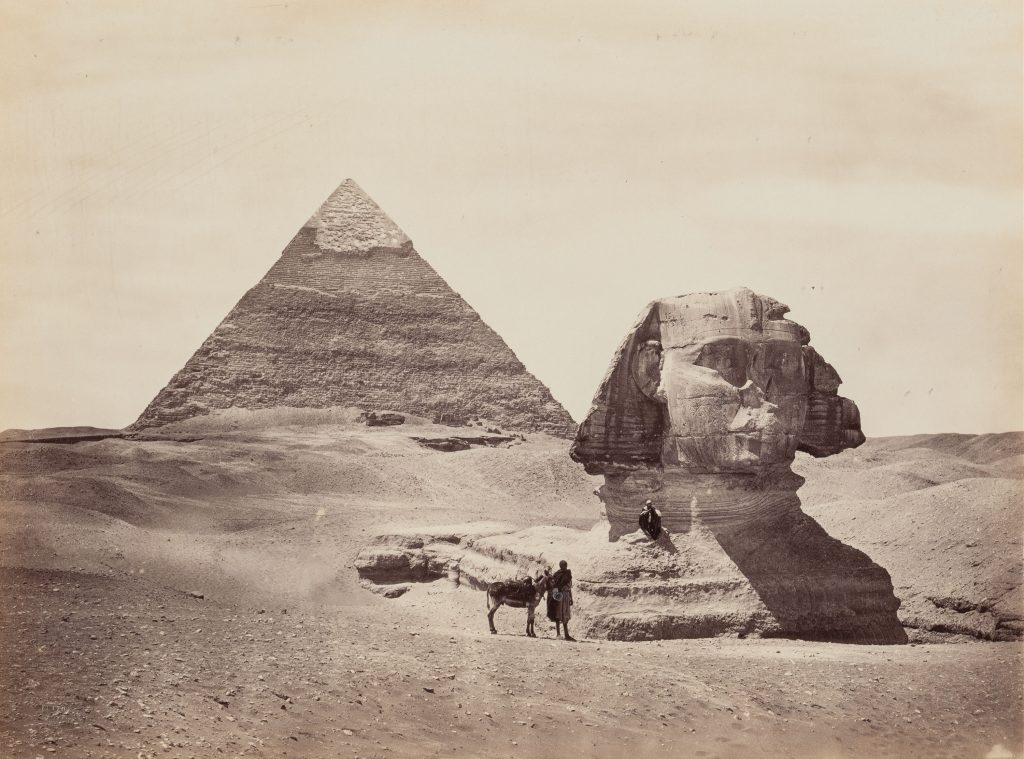
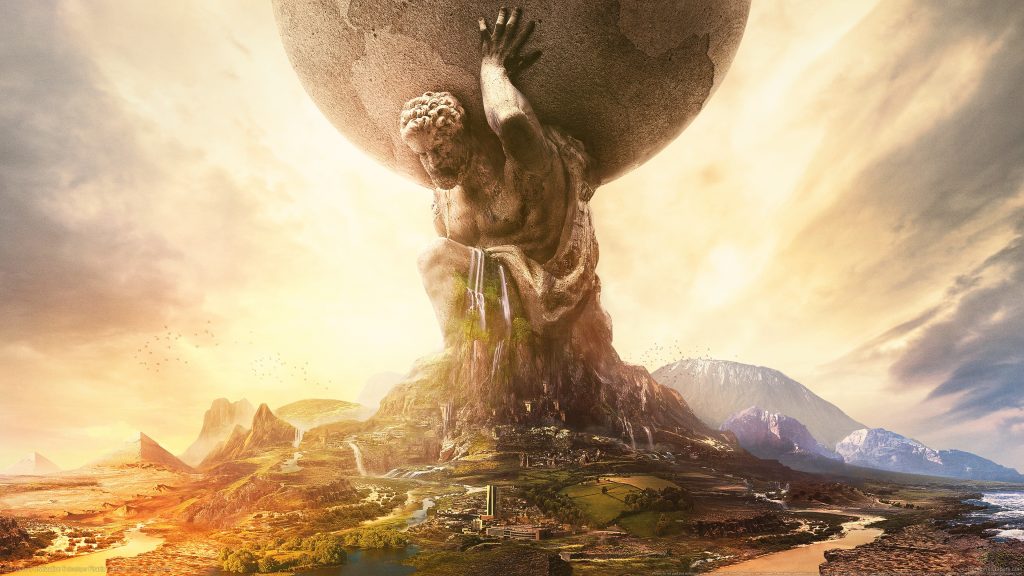
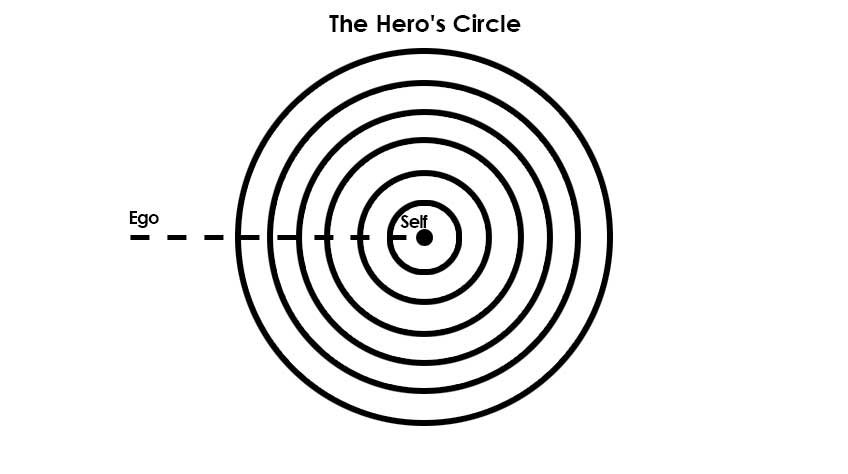
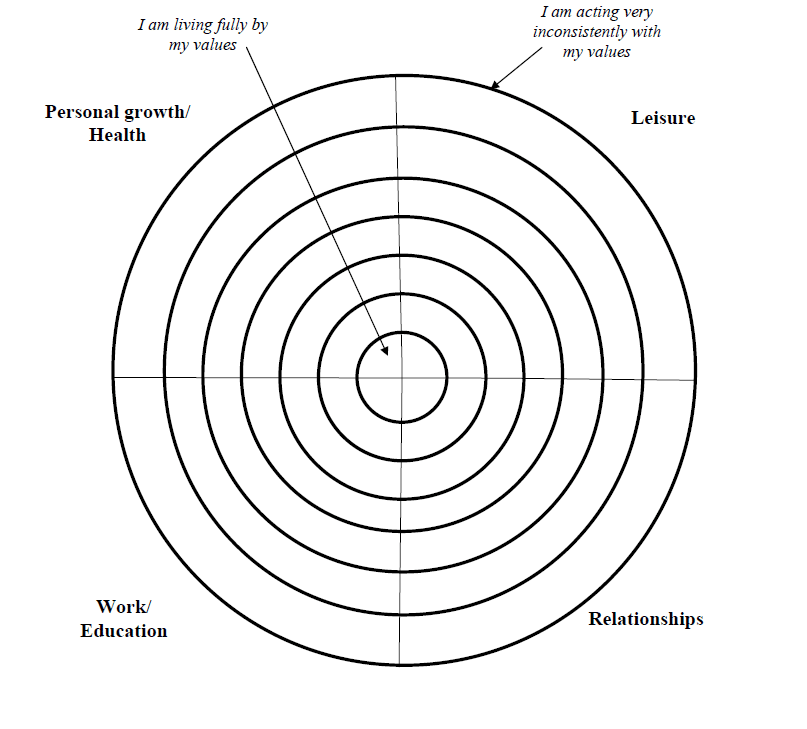
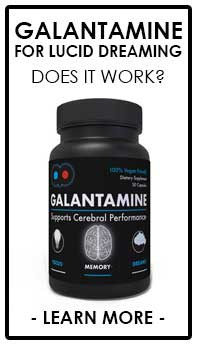
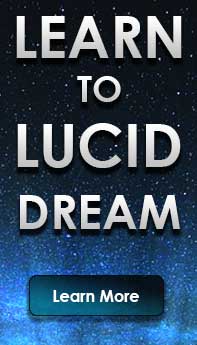
Beautifully written, and so true. As a woman, I see beyond the “MeTo” toxicity now and ask – what about the future. How e embrace the Ying and Yang, Female and Male and everything in between and allow each individual to have their own journey and become their own heroes. We all need to fight our dragons…. once we face the dragons – they become just a big lizards
Another very enriching post from Andrew. Thank you. I was especially intrigued by the discussion of the general malaise that seems to afflict men in our society today. You don’t see any girls on Pleasure Island, and the more recent corollary seems to be the Darwin Awards, which are entirely dominated by those of us with the Y-chromosome! My first encounter with the Hero’s Journey was in 1970, at age 12, when I was enraptured by The Lord of the Rings. It seems almost trite to mention it these days, but that was long before Tolkien had been popularized and–to a certain extent–commercialized and trivialized. If Peter Jackson got any part of the story right in a single frame, it is that one glimpse of Frodo’s farewell at the Grey Havens, where he is illuminated by an inner light that is nothing short of beatific. By the way, I would also bring to your consideration Mervyn Peake’s Gormenghast Trilogy, which I also stumbled upon as an errant 12-year old, and which I am re-reading now for the first time in 40-some years. It is an epic Hero Quest, and Peake’s prose is Dickensian. Again, thank you sincerely, Andrew. Keep it coming!
Rob,
It’s good to hear someone else agrees about the suffering men in our country are now facing. All we hear are the murders, rapes, school shootings, domestic violence, the wars started, and so forth. The solution, we are told, is to take a top down, punishing view; I have heard some even scoff at the notion that men are suffering, damaged. But what is someone who harms others, if not damaged themselves?
I am curious, what does Frodo’s inner light shining through at the end mean to you? It is powerful imagery.
About the Gormenghast Trilogy, I haven’t read it but will see if I can’t find a copy of the first book, especially a Dickensian style; something about Dickens has always appealed, perhaps it’s because we share a birthday! Each story that follows the Hero’s Journey is so exciting for me to read. It’s like seeing another form of human potential, potential for overcoming our individual suffering and transforming into something new. It would be very interesting to me how your perspective may, or may not, have changed after 40 years between readings. Part of me wonders whether we find new meaning at different phases of life, yet another parts wonders that, if your inner Self remains unchanged, and only the outer shell changes, perhaps the story might resonate the same as before?
Thank you very much for your interesting insights, Rob.
Andrew,
I think Joseph Campbell offered us a clue to the suffering of men in our society today. Reaching back many years to when I read all of Campbell’s works I could find at the time–and if I understand Joseph correctly–he developed the theme of the central importance of male initiation rites in traditional societies, such as Native America and Aboriginal Australia, and their stark absence in our own. In brief, Campbell noted that womanhood “happens” to young girls with their first menses (a bit simplistic, perhaps), but there is no commensurate “happening” for young boys. Instead, they were guided by an elder male, typically an uncle, through a ritual that was often frightening (The Shadow?), and sometimes painful; a test entailing self-denial and forbearance, and one that challenged the young initiate to meet the societal standards of manhood necessary for survival of the People, with self-discipline and courage. It seems so many of these aspects are missing from anything we provide our young men these days. I worry about my own sons, who are bombarded with the powerful, addictive messaging of our high-tech society…
On Frodo’s beatific illumination: for me, I see that Frodo has crossed the Vale, and is beyond all pain and suffering. He passed the Hero’s ordeal, and returned from the depths, bringing redemption for Middle Earth. That angelic smile is the light of understanding, compassion, and pure Love for those remaining behind. It is a Buddha moment. Every single time I watch that one scene, I am overpowered by it’s beauty…
Gormenghast is a treasure. If you can find a copy of all three books, published sequentially between 1948 and 1958, they would be true collectors’ copies. I have my original, yellow-leafed, dog-eared and tattered paperback copies (along with the contemporary 1970 paperback copies of The Lord of the Rings). But look for copies of Gormenghast that have Mervyn Peake’s original drawings included. Peake was, first and foremost, a visual artist, and subsequently a poet and writer. Fascinating life, and he died too early from a tragic disease that was not understood at the time, and which alienated many people who had been close to him. It is now believed that he suffered from Lewy Body Dementia, which claimed my mother earlier this year after a long, terrible illness. For a quick shortcut to Gormenghast, Kindle offers an electronic version that has replications of Peake’s original drawings, though I suspect you may prefer the feel and smell of a good, tangible book! And I also realize I low-balled the four-decade estimate of when I last read Gormenghast–more accurately, nearly 50 years have somehow slipped by! Over all those years, I have from time to time, thought about the Hero of Gormenghast, Titus Groan, and have wondered if I should return to those dark hallways and the castle intrigue. I just picked it up again a few days ago, so I’m unable to render a judgment yet on the the differences between my perceptions at 12, and those again at 60. I suspect I will bring 50 years of learning and baggage to this next reading, for better or worse. I look forward to sharing those observations with you as I go…
Enjoy Gormenghast, and I look forward to future posts and conversations.
Thank you,
Rob
Rob,
Thank you for sharing your fascinating insights with me. You have an immense talent for writing if you did not already know that, and should you ever consider writing about Campbell, the Hero’s Journey from your life, or Gormenghast especially with this current reading, or any story, I would very much like to read your thoughts on them. Thanks for the suggestion on which version to look for, I will look for the older versions certainly.
You are so right, we need a rite of passage for young men in this country. It makes sense to me about young women having a more natural rite in their lives that young men do not have. Some people are starting to make vision quest kind of experiences for veterans recently, but a great many young men need something similar, guided by someone they can trust to help build some solid sense of themselves, how they can live in the adult world with an adult identity based on their personal truth.
The discussion of Frodo and beatification reminds me of the imagery associated with various saints of history usually shown in art as illuminated, having a halo around their heads.
I am sad to hear about the recent passing of your mother from Lewy Body Dementia. My father had dementia at the end when he passed away from other conditions, and it scares me since I know I am vulnerable to it.
Take care,
Andrew